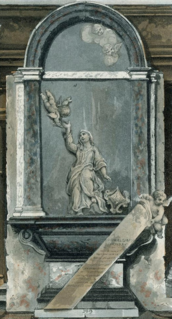Related Research Articles

Sir Philip Carteret, 2nd Baronet, also known as Philippe de Carteret IV, was the 5th Seigneur of Sark from 1663 to 1693.
Sir Philip Carteret, 1st Baronet, also known as Philippe de Carteret III, was the 4th Seigneur of Sark. He supported the Royalist (Cavalier) cause during the War of the Three Kingdoms.
Philippe de Carteret II, 3rd Seigneur of Sark was the son of Philippe de Carteret I (1552–1594) and Rachel Paulett (1564–1650), daughter of George Paulett (1534–1621) who was Bailiff of Jersey from 1583 to 1611, and his wife Elizabeth Perrin (1538–1615).
Philippe de Carteret I, 2nd Seigneur of Sark (1552–1594) was the Seigneur of Sark and Saint Ouen from 1578 to 1594.

Hellier de Carteret was the first Seigneur of Sark, reigning from 1563 to 1578. He was the son of Edouard de Carteret, Seigneur of Saint Ouen, and grandson of Philip De Carteret, 8th Seigneur of St Ouen.

Vice Admiral Sir George Carteret, 1st Baronet was a royalist statesman in Jersey and England, who served in the Clarendon Ministry as Treasurer of the Navy. He was also one of the original lords proprietor of the former British colony of Carolina and New Jersey. Carteret, New Jersey, as well as Carteret County, North Carolina, both in the United States, are named after him. He acquired the manor of Haynes, Bedfordshire, in about 1667.

George Carteret, 1st Baron Carteret was son of Sir Philip Carteret and the grandson of Vice Admiral Sir George Carteret, 1st Baronet. His mother was Lady Jemima Montagu, a daughter of Edward Montagu, 1st Earl of Sandwich. He was left an orphan at the age of five, and was brought up by his grandmother Elizabeth de Carteret, a daughter of Philippe de Carteret II, 3rd Seigneur de Sark, whom Samuel Pepys called "the most kind lady in the world."

St. Ouen is one of the twelve parishes of Jersey in the Channel Islands. It is around 8.8 kilometres (5.5 mi) north-west of St. Helier. It has a population of 4,097. The parish is the largest parish by surface area, covering 8,525 vergées (15 km2), and is located in part on a peninsula.
Sir Renaud, (Reginald), De Carteret, Seigneur of Carteret., (1063–1125) is first found in a charter, dated 1125, from the Abbey of Mont St. Michel. He went on the First Crusade, 1096-99, with Robert Curthose, Duke of Normandy.
Sir Reginald De Carteret, Baron of Carteret and 1st Seigneur of Saint Ouen (1140–1214) was the son of Renaud de Carteret, Baron of Carteret and Lord of Saint Ouen, and father of Philippe and Godefroy.
Sir Renaud (Reginald)De Carteret,8th Seigneur of Saint Ouen was a Seigneur of St Ouen in Jersey.
Sir Philippe De Carteret, Seigneur of St Ouen, born 1152. Son of Renaud De Carteret, Baron Carteret and 1st Seigneur of Saint Ouen.

Grosnez Castle is a ruined 14th-century castle in Saint Ouen, situated in Grosnez in the north-west corner of the island of Jersey in the Channel Islands. Philippe de Carteret held it against the French when they held half of Jersey between 1461 and 1467, but it has been a ruin since the mid-16th century.

The de Carteret family was perhaps the greatest of the patrician families of the Channel Islands. Their influence on the Island would last from the 10th century until the present time.
Carteret is a surname of Norman origin. It derives from Carteret, Normandy, an inhabited place on the northwest coast of the Cotentin peninsula, facing the Channel Islands. The Channel Islands are the only remnant of the Duchy of Normandy, the original territorial holding of William the Conqueror, who invaded England in 1066. Historically, members of the Carteret family have occupied influential positions in the Channel Islands, notably as hereditary Seigneurs of Sark and hereditary Bailiffs of Jersey.

Elias Dumaresq, 5th Seigneur of Augres was born in 1674 and was a Seigneur of Augres located in the parish of Trinity, Jersey, the largest of the Channel Islands, He belonged to the influential Dumaresq family.

The Seigneur of Augrès is a noble title in Jersey, which still follows the Norman system. They traditionally lived in Les Augrès Manor, which was actually in the fief of Diélament and not Augrès.

Elias Dumaresq, 3rd Seigneur of Augrès was born to Abraham Dumaresq 2nd Seigneur of Augrès and Susan de Carteret daughter of Philippe de Carteret I, 2nd Seigneur of Sark and his wife Racheal Paulet. He was a Royalist and a Jurat of the Royal Court.
Sir Philippe De Carteret, 3rd Seigneur of Saint Ouen, (1205-1285) was the Seigneur of Saint Ouen of Saint Ouen's Manor during the reign of King Edward I. He inherited the title from his father Sir Philip De Carteret, 2nd Seigneur of Saint Ouen, who was unsuccessful in his attempts to regain the family's Norman holdings that were lost under King John.
References
- Payne, James Bertrand (1859–1865). Armorial of Jersey : being an account, heraldic and antiquarian, of its chief native families, with pedigrees, biographical notices, and illustrative data; to which are added a brief history of heraldry, and remarks on the mediaeval antiquities of the island. University of California Libraries. [Jersey].
{{cite book}}: CS1 maint: date format (link) - "St Ouen's Manor". St Ouen's Manor. Retrieved 2022-03-14.